- Laparoscopic & Endoscopic Products
-
Respiratory & Anesthesia
-
Oxygen Therapy
- Capnography Mask
- CO₂ Nasal Oxygen Cannula
- Elastic Head Strap Cannula
- Oxygen Mask with Swivel Connector
- Multi-vent Mask
- Non-rebreathing Mask
- Oxygen Mask with Adjustable Nose Clip
- Venturi Mask
- Nebulizer Mask
- Nebulizer with Mouth Piece
- Nebulizer Mask with Swivel Connector
- Tracheostomy Mask
- Nasal Oxygen Cannula
-
Airway Management
- Oropharyngeal Airway
- Nasopharyngeal Airway
- Laryngeal Mask Airway
- Tracheostomy Tube
- Endotracheal Tube
- Endotracheal Tube Introducer
- Intubating Stylet
- One-way Valve Mouthpiece
- Mucus Control Vacuum Valve
- Mucus Specimen Trap
- Mucus Extractor
- Mucus Extractor with Protective Sheath
- Disposable Aspirating Tube
- Anesthesia
- Closed / Open Suction Catheter
- Pressure Infuser
- ABC Mouthpiece and Filter Kit
- MDI Spacer
- Disposable Ezscope™ Pro Broncho
- Nose Clip
-
Oxygen Therapy
- Cardiothoracic Surgery
- Gynaecology
-
Urology
- CathVantage™ Portable Hydrophilic Intermittent Catheter
-
Cysto/Bladder Irrigation Set
- M-easy Bladder Irrigation Set
- B-cylind Bladder Irrigation Set
- S-tur Bladder Irrigation Set
- S-uni Bladder Irrigation Set
- B-uro Bladder Irrigation Set
- Premi Bladder Irrigation Set
- J-pump Bladder Irrigation Set
- J-tur Bladder Irrigation Set
- H-pump Bladder Irrigation Set
- Sup-flow Bladder Irrigation Set
- Maple Irrigation Set
- Peony Irrigation Set
- Nelaton Catheter
- Urinary Drainage Bag
- Urinary Drainage Leg Bag
- Enema Kits
- Sitz Bath Kits
- Click Seal Specimen Container
- Silicone Male Catheter
- Spigot Catheter and Adaptor
- Sandalwood Irrigation Set
- Freesia Irrigation Set
- Daffodil Irrigation Set
- Enteral Feeding Products
- Dental
- Fluid Management
- Warming Unit and Warming Blanket
-
Operating Room Necessities
- Pulsed Lavage System
- Magnetic Drape
- Suction Handle
-
General Surgery
- Perfusion Atomizer System
- Gastric Sump Tube
- Surgical Hand Immobilizer
- Administration Set for Blood
- Ear/Ulcer Syringe
- Bulb Irrigation Syringe
- Toomey Irrigation Syringe
- Mixing Cannula
- Basin Liner/Basin Drape
- Camera Handle Cover
- Light Handle Cover
- Medical Brush
- Sponge Stick
- Suture Retriever
- Needle Counter
- Disposable Calibration Tube
- Heparin Cap
- 100ML Bulb Irrigation Syringe
- Scleral Marker
- Surgical Light Handle
- Mucosal Atomization Device
- Durable Medical Equipment
- Patient Handling System
- Personal Protective Equipment
- PVC-FREE Medical Device
- Emergency
-
GCMEDICA Dispositifs médicaux jetablesJul 26 , 2024
-
GCMEDICA Dispositivos médicos desechables en EuropaJul 26 , 2024
-
GCMEDICA Disposable Medical Devices In EuropeJul 26 , 2024
-
GCMEDICA Disposable Medical Devices In North AmericaJul 26 , 2024
-
GCMEDICA Dispositifs médicaux jetables en EuropeJul 26 , 2024
Urinary Drainage Bag
The Urine Bag/Meter is used to collect the urine or measure the volume of urine from a patient, either during the course of normal urination or while the patient is catheterized.
Urinary drainage bags are medical devices designed for the collection and temporary storage of urine. They play a crucial role in healthcare, particularly for patients who cannot independently manage their bladder functions due to medical conditions, surgeries, or mobility limitations. These devices are categorized based on their application, design, and usability into two primary types: external drainage bags and leg bags.
External Drainage Bags are typically larger in capacity and are used for long-term urine collection. They are designed to hang beside a patient's bed or wheelchair, making them an ideal choice for patients who are bedridden or have limited mobility. The larger size of these bags ensures that they can collect a significant amount of urine over an extended period, reducing the need for frequent emptying. This is particularly beneficial during the night or for patients in intensive care, where minimal disturbance is crucial.
Leg Bags are smaller, portable urine collection bags that are designed to be discreetly worn under clothing, attached to the patient's thigh or calf with straps. These bags offer greater mobility and convenience for patients who are active and wish to go about their daily lives without the constant reminder of their medical condition. The compact size of leg bags makes them less noticeable and more comfortable to wear, though they do require more frequent emptying than their external counterparts.
Tpey of Gcmedica Urinary Drainage Bag
How to use Urinary Drainage Bag
Using a urinary drainage bag involves specific steps to ensure safety and hygiene:
1.Connecting to the Catheter: Attach the drainage bag to the catheter, which is inserted into the bladder. Ensure a clean, secure connection to prevent leaks, using sterile gloves to minimize infection risk.
2.Securing the Bag: Properly secure the bag to the leg or bedside, avoiding tension on the catheter. For leg bags, use straps for stability without restricting circulation. Keep external bags below bladder level to facilitate gravity drainage and prevent urine backflow.
3.Regular Emptying: Monitor the bag's fill level and empty before it's too full, typically at two-thirds capacity, to avoid overflow. Empty the bag using a clean container, maintaining hygiene before and after the process.
4.Cleaning and Maintenance: For reusable bags, clean and disinfect regularly following manufacturer's instructions. Rinse with water and mild detergent, then disinfect and dry thoroughly before reuse. Check regularly for damage or wear and replace as needed.
Following these concise steps ensures effective urinary management, reducing infection risk and maintaining patient comfort.
Frequently Asked Questions (FAQ)
Q1:How often should a urinary drainage bag be changed?
A1:Urinary drainage bags should be changed regularly to prevent infections and maintain hygiene. For disposable bags, replace them once they are full or according to the manufacturer's recommendations, typically every 5 to 7 days. Reusable bags should be cleaned and disinfected daily and replaced if they show signs of wear or damage. Always follow your healthcare provider's advice for specific guidelines based on your medical condition.
Q2:Can I sleep with a urinary drainage bag attached?
A2:Yes, you can sleep with a urinary drainage bag attached. It is important to secure the bag below the level of your bladder to ensure gravity assists in urine flow and prevents backflow, which could lead to infections. Consider using a larger bedside bag during the night to accommodate increased urine volume and reduce the need for nighttime changes.
Q3:Can urinary drainage bags cause infections?
A3:If not used, cleaned, or changed properly, urinary drainage bags can increase the risk of urinary tract infections (UTIs). To minimize this risk, maintain strict hygiene, use sterile techniques when handling the bag and catheter, and ensure regular cleaning and changing of the bag according to guidelines. Consult your healthcare provider if you experience symptoms of a UTI.
Q4:Are there different sizes of urinary drainage bags available?
A4:Yes, urinary drainage bags come in various sizes to suit different needs. Leg bags are smaller for daytime use and mobility, while larger bedside bags are designed for overnight use. The capacity typically ranges from 500 mL for leg bags to 2000 mL or more for bedside bags. Choose a size based on your daily activities, urine output, and personal comfort.
Customer Reviews for GCmedica Urinary Drainage Bag
1.Sarah Jennings
★ ★ ★ ★ ★"The larger capacity bag allows me to get a good night's sleep without worrying about overflow. Very satisfied with this product."
2.Rebecca Sinclair
★ ★ ★ ★ ★"Very comfortable and easy to empty. It has made managing my condition much easier. Great customer support for any questions I had."


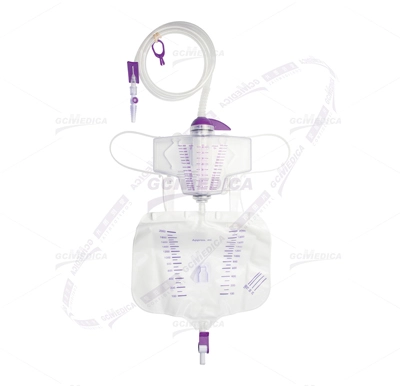
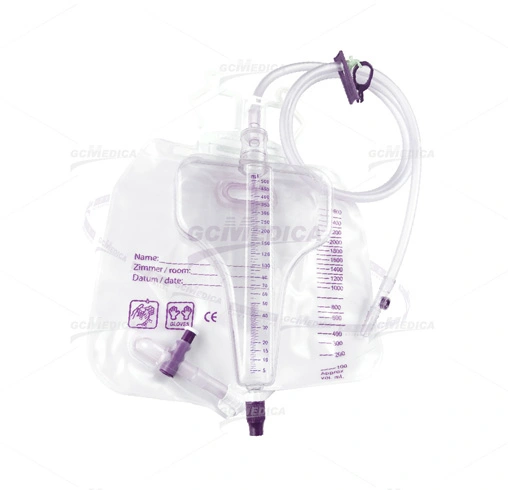
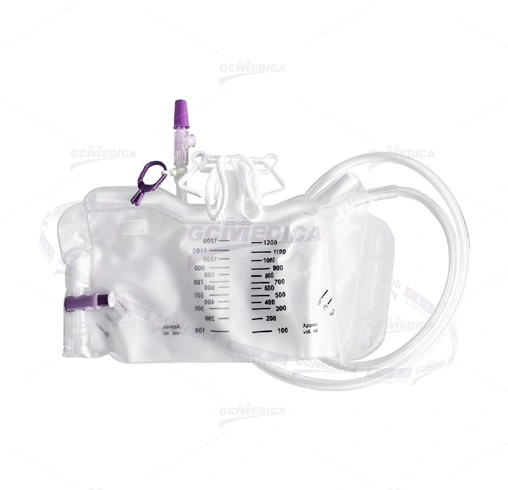
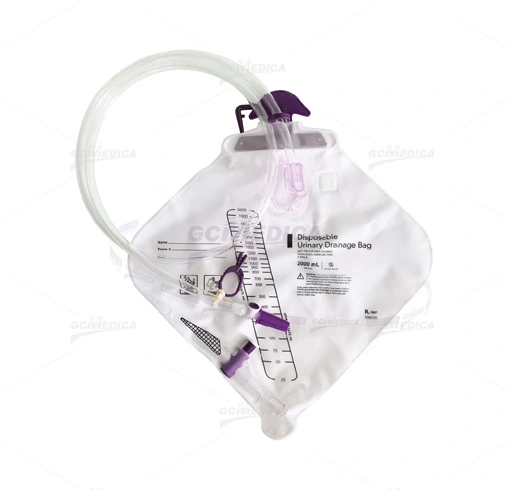
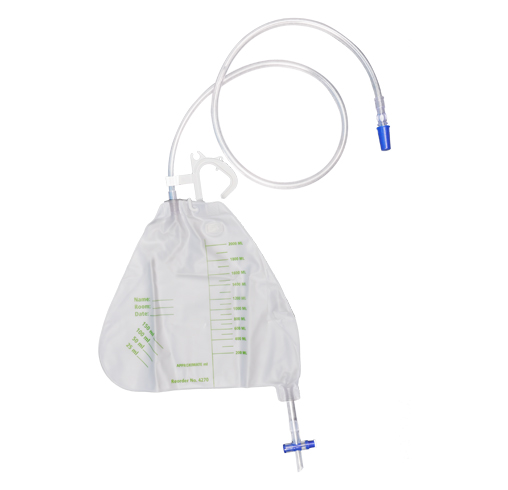
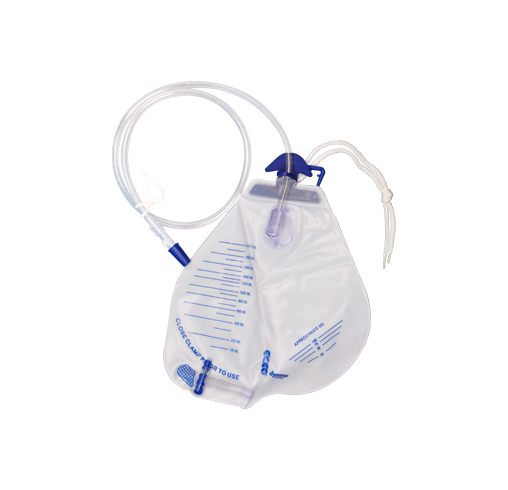

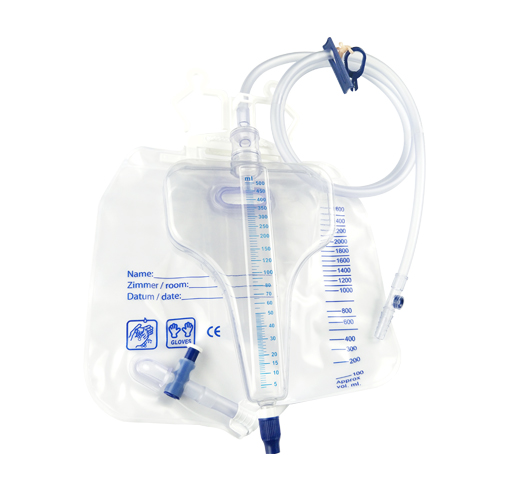 +
+
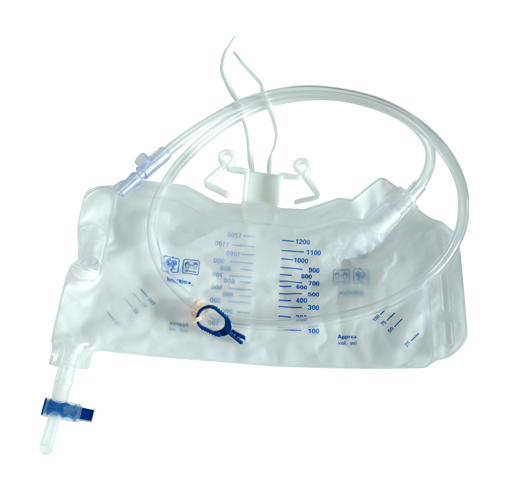 +
+